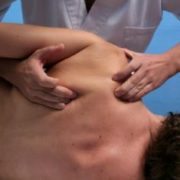Mulligan Concept of Manual Therapy: An Overview
The Mulligan Concept is a manual therapy technique developed by Brian Mulligan of Wellington, New Zealand. The concept is based on the mobilization with movement (MWM) technique of gliding specific joints at precise angles with a specific amount of pressure while a patient moves through a full active range of motion. When performed correctly, this technique will be pain-free and will show an immediate increase in the patient’s range of motion.
While the spinal joints are glided at parallel angles, the peripheral joints are glided at perpendicular angles. If there is pain or lack of increased motion there are 3 things the clinician needs to consider:
- The segment being treated
- The angle of the mobilization
- The force being applied
The clinician should also be constantly on the lookout for the PILL response (Pain free, Instant result, Long Lasting) to determine the effectiveness of the treatment, while also investigating combinations of parallel or perpendicular glides to find the correct treatment plane.
Once the correct mobilization has been identified, it’s important for the patient to reach their end range of the motion and apply overpressure at the very end. Overpressure (pushing slightly more at the end of the active range) will ensure the positive carryover of the technique while creating stretching, but not pain. The techniques are especially effective because they can be performed by the patient with a specific exercise program on their own. If a patient is performing these exercises correctly on their own at home, they should expect a 50% improvement in their motion by their second therapy visit.
To become a certified Mulligan provider (a CMP), the clinician needs to attend three separate classes and pass both a written and practical exam. If you would like more information about the Mulligan Concept or want to be treated by a CMP, feel free to give Red Canyon Physical Therapy a call and make an appointment with one of our Certified Mulligan Providers today.


